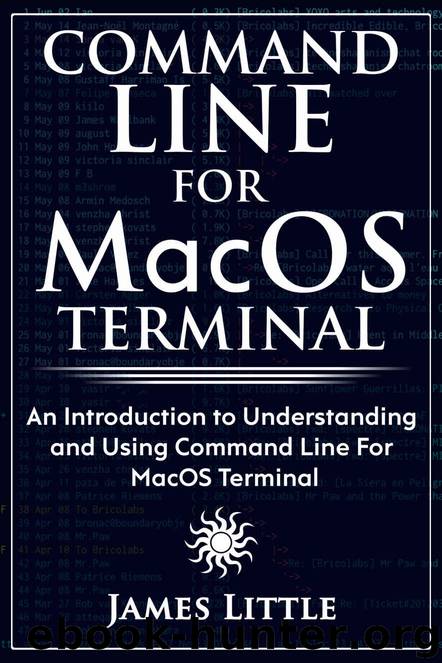Command Line For MacOS Terminal: An Introduction to Understanding and Using Command Line For MacOS Terminal by James Little

Author:James Little [Little, James]
Language: eng
Format: azw3
Published: 2018-02-19T05:00:00+00:00
Chapter 6: Customizing Your Mac with the Terminal
Working with the terminal on your Mac computer will help you to get so much done. It is really simple to use, once you get used to the whole process, and you can gain a lot more power than you would be able to do with your graphical user interface. To see some of the things that you can do with this terminal, we are going to use it to help you customize your Mac computer.
Step 1: Open the terminal
The first thing that you will need to do is open up the terminal. Look at your desktop and search for the spotlight. This should be on the top right hand of the screen at the top of your menu bar. When you click on this, it is going to open up a search bar that shows up in the middle of your screen.
From here, you will need to type in “terminal” and then press on Return. This is going to open up a new terminal window for you to use. If you are not able to find the search icon, you can open up your terminal by using the Finder. To do this, click on Finder, then Applications, Utilities, and then double-click on the Terminal.
Step 2: Use the terminal commands
Now that your terminal window is open, it is time to make some changes. There are a lot of ways that you can customize your Mac computer, as long as you have the right commands to make it work.
The first thing that we are going to do is add a new message to the login screen. All that you will need to do for this one is to type in the following command:
sudo defaults write /Library/Preferences/com.apple.loginwindow LoginwindowText "If this laptop is lost, please call 555-555-5555. Cash reward”
When you have this typed in, press the Return button. You can always change out the message that is inside of the quotes to be whatever you would like it to be on your welcome screen. Then the next time that you get to your login screen, you will see this message show up.
You can also decide to add some blank spaces to your doc. To do this is to write out the following command:
defaults write com.apple.dock persistent-apps -array-add '{"tile-type "="spacer-tile";}' killall Dock
Then press Return. This is going to make sure that there is a blank space to your dock each time that this command is entered. You will be able to click and drag the space and move it around in the dock, allowing a divider in for organization. If you are then prompted for your password, you just need to type it in and press Return. If you would like to delete the blank space from your dock, you just need to drag the space out of the dog until it shows “Remove” and then let it go.
There are times when your computer will go to sleep if you are not using it for a certain amount of time.
Download
This site does not store any files on its server. We only index and link to content provided by other sites. Please contact the content providers to delete copyright contents if any and email us, we'll remove relevant links or contents immediately.
Test-Driven iOS Development with Swift 4 by Dominik Hauser(7844)
Filmora Efficient Editing by Alexander Zacharias(6343)
The Infinite Retina by Robert Scoble Irena Cronin(5840)
Learn Wireshark - Fundamentals of Wireshark. by Lisa Bock(4259)
Linux Device Driver Development Cookbook by Rodolfo Giometti(3983)
Edit Like a Pro with iMovie by Regit(3700)
Linux Administration Best Practices by Scott Alan Miller(2882)
Linux Command Line and Shell Scripting Techniques by Vedran Dakic & Jasmin Redzepagic(2870)
Mastering PowerShell Scripting - Fourth Edition by Chris Dent(2670)
MCSA Windows Server 2016 Study Guide: Exam 70-740 by William Panek(2550)
Creative Projects for Rust Programmers by Carlo Milanesi(2502)
Docker on Windows by Stoneman Elton(2345)
Kali Linux - An Ethical Hacker's Cookbook: End-to-end penetration testing solutions by Sharma Himanshu(2333)
Hands-On AWS Penetration Testing with Kali Linux by Karl Gilbert(2132)
Hands-On Linux for Architects by Denis Salamanca(2093)
Programming in C (4th Edition) (Developer's Library) by Stephen G. Kochan(2058)
Computers For Seniors For Dummies by Nancy C. Muir(2051)
The Old New Thing by Raymond Chen(1960)
Linux Kernel Debugging by Kaiwan N Billimoria(1792)
